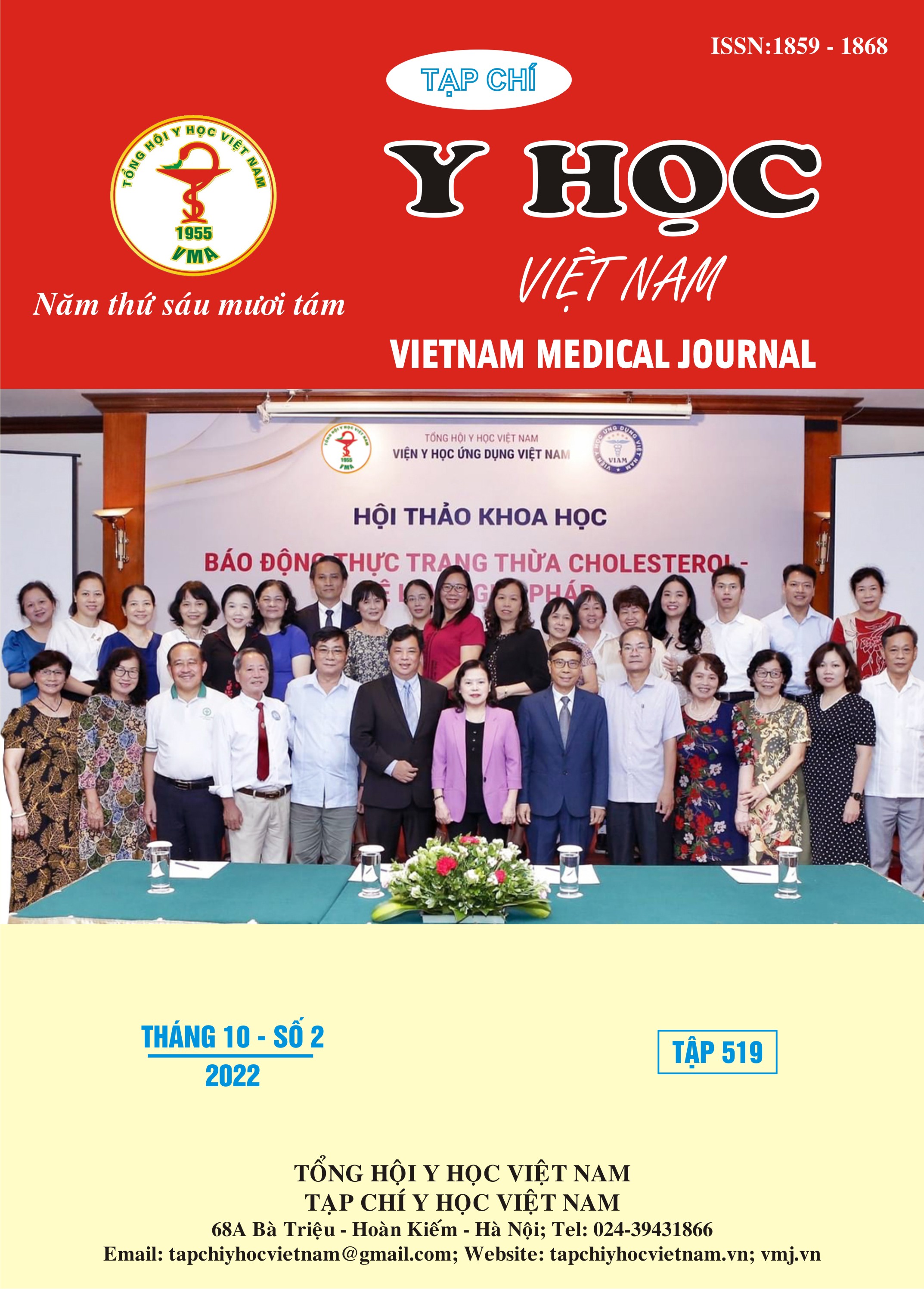RESULTS OF SURGICAL METHOD IN TREATING MALUNION AFTER DISTAL RADIUS FRACTURE AT VIET DUC HOSPITAL
Main Article Content
Abstract
Objectives: describe the clinical manifestations and radiographic index of malunions after distal radius fractures and evaluate the results of surgical method in treating malunion after distal radius fracture. Subjects and methods: prospective and retrospective cross-sectional study of 33 patients who went on surgery to treat malunion after distal radius fracture at Viet Duc Hospital from 2016 March to 2019 August. Results: All patients came to the hospital because of pain, limited wrist movement, of which 63.7% of patients had occasional pain when not working and 3% of patients had constant pain. Fracture classification according to AO showed that type A accounted for 45.5%, type B accounted for 24.2% and type C accounted for 30.3%. Preoperative radiographic characteristics showed that up to 48.5% of patients had VA below -10 degrees, 21.2% had UV above 4 mm, and 63.6% had RL less than 10 mm. The average postoperative radiographic index was as follows: VA 11.48 degrees ± 1.82, UA 20.97 degrees ± 3.40, UV - 0.03mm ± 2.84, the difference of previous radiographic indices and after surgery was statistically significant with p<0.001. Regards to function assessment after surgery according to Green and O'Brien, 87.88% of patients rated good and very good, 12.12% of patients rated moderate and bad, in which there are 9.09% of patients rated bad. Conclusions: Treating malunion after distal radius fracture by surgical method mostly gives good results, however, more similar studies are needed to confirm it.
Article Details
Keywords
malunion, distal radius fracture, surgery
References
2. Cooney WP et al (1980). Complications of Colles’ fractures. J Bone Joint Surg Am;62(4):613-619.
3. Jupiter JB (1991). Current concepts review: fractures of the distal end of the radius. J Bone Joint Surg Am;73(3):461-469.
4. Shehovych A et al (2016). Adult distal radius fractures classification systems: essential clinical knowledge or abstract memory testing? Ann R Coll Surg Engl;98(8):525-531.
5. Haas JL. Caffiniere de la J Y (1995). Fixation of distal radial fractures: intramedullary pinning versus external fixation. Fractures of the distal radius London: Martin Dunitz;27:229-239.
6. Chen ACY et al (2017). Intramedullary nailing for correction of post-traumatic deformity in late-diagnosed distal radius fractures. J Orthop Traumatol;18(1):37-42
7. Peterson B et al (2008). Corrective Osteotomy for Deformity of the Distal Radius Using a Volar Locking Plate. Hand (New York, N,Y);3(1):61-68
8. Tarallo L (2014). Malunited extra-articular distal radius fractures: corrective osteotomies using volar locking plate. J Orthopaed Traumatol;15(4):285-290


